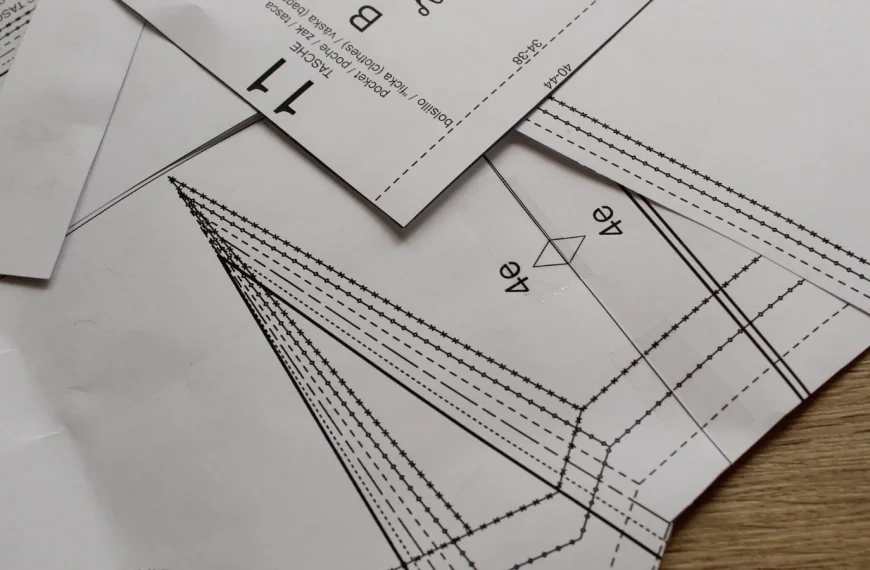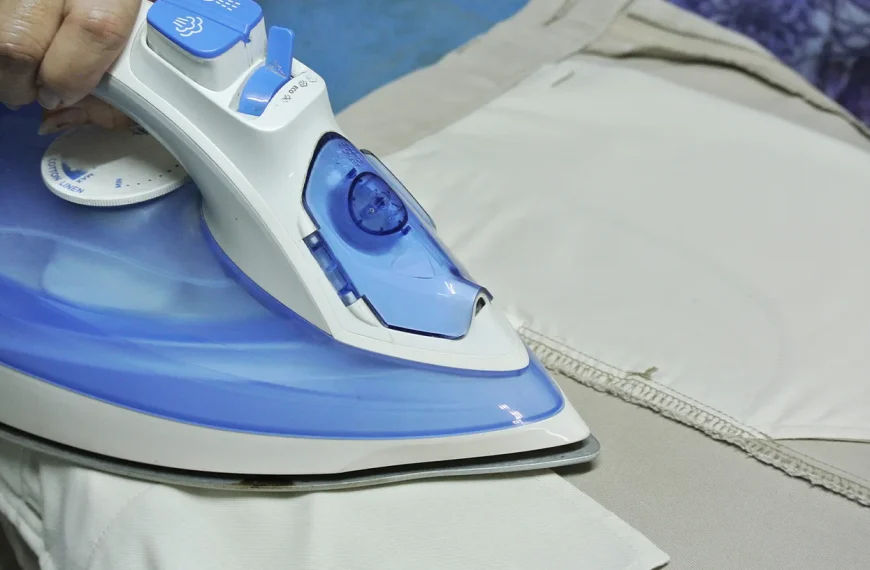In the age of digital design and laser cutting, you find yourself drawn back to the tactile joys of traditional tailoring. There, the snip of a scissor is as crucial as the stitch of a needle. You’re about to make that first decisive cut, but you hesitate. You’re pondering whether to use your fabric scissors or the normal ones that lie within arm’s reach.
As a seasoned crafter, you know this choice isn’t merely a matter of convenience. It’s a reflection of your commitment to the craft. Fabric scissors, with their fine-tuned edges, promise a precise, clean line through your chosen textile. Normal scissors, though versatile, might not do your fabric justice.
You understand that the right tool can elevate your work from homemade to artisanal. But the question remains: How do you ensure you’re using the best tool for the task at hand? Let’s examine the intricacies between fabric scissors vs normal scissors. In doing so, elevate your craft to its finest form.
Key Takeaways for Fabric Scissors vs Normal Scissors
- Fabric scissors have sharper blades than normal scissors.
- Fabric scissors have heavy-duty blades to cut through dense weaves and thick layers. But normal scissors may struggle with fabric work.
- Fabric scissors have ergonomically designed handles for a comfortable grip and to reduce hand fatigue. Normal scissors have a more generic handle shape.
- It is recommended to reserve fabric scissors strictly for fabric and invest in separate scissors for paper cutting.
6 Differences Between Fabric Scissors and Normal Scissors
You’ll notice that fabric scissors boast sharper blades than normal scissors. They’re designed to slice through textiles with precision. They’re also usually heavier and more durable, with a handle crafted for comfort during repetitive cutting tasks.
In contrast, normal scissors have a lighter weight and a more universal handle. They’re suited for various everyday materials but not optimized for fabric.
Sharpness
Usually, fabric scissors feature significantly sharper blades than normal scissors. This enables them to deliver precise cuts through multiple layers of fabric without fraying. The sharpness of these blades isn’t only a matter of convenience. It’s a critical component for quality tailoring and sewing. Sharp scissors translate to clean lines and the longevity of both the scissors and your fabric.
- Sharp blades: Fabric scissors maintain their edge longer for consistency in your cuts. This is vital for intricate patterns and fine textiles.
- Blunt trauma: Using dull scissors on fabric can lead to jagged edges, ruining the aesthetics of your project and causing frustration.
- Sharpen with care: Normal scissors often become blunt faster and need more frequent sharpening. This can degrade blade quality over time.
Heavy-Duty
Fabric scissors have robust, heavy-duty blades to glide through textiles effortlessly. In contrast, normal scissors may struggle with the dense weaves and thick layers common in fabric work. The composition of fabric shears often includes carbon steel. It provides the strength needed to maintain an extremely sharp edge. This allows them to cut through all kinds of fabric, from delicate silks to stubborn denim and canvas.
Their thicker blades are specifically designed to offer stability and longevity. The two are essential for repetitive and precise cuts in tailoring and dressmaking. But the blades on standard scissors are usually slimmer and less durable. They cater to a wider range of lighter materials but fall short in specialized fabric-cutting tasks.
Durability
It’s important to note that fabric scissors are more durable than normal scissors. Because they have blades made from harder materials like carbon steel. These harder blades can withstand continuous use and sharpening without losing their sharp edge. High-quality fabric scissors can keep their sharpness for longer due to this hardness. On the other hand, regular scissors are usually made of stainless steel. This material can dull more quickly and may not be able to withstand the same level of use as fabric scissors.
- Embrace Precision: Feel confident in each cut with carbon steel’s resistance to wear.
- Defy Time: Invest in longevity, as your fabric scissors outlast others, defying rust and decay.
- Craftsmanship Pride: Relish the superior craftsmanship. Keep your tools in top condition, cut after cut.
Handle
The handles on fabric scissors provide you with a comfortable grip suited for prolonged cutting tasks. This is a distinct advantage over the generic handles on normal scissors. The ergonomic contouring of the handle on fabric scissors can reduce hand fatigue. This is essential for the meticulous work of tailoring and quilting.
In contrast, normal scissors have a more universal handle shape. They lack the specialized ergonomic features that help with the precise control needed for fabric cutting.
Moreover, the pivot point in fabric scissors is finely adjusted to ensure a smooth and effortless cutting action, allowing for greater accuracy. Normal scissors, with their less refined pivot mechanism, aren’t optimized for the precision cutting of textiles. They could potentially lead to a subpar performance.
Weight
For the specific needs of tailors and crafters, fabric scissors often have a heftier construction than normal scissors. This will provide stability and control for precise cuts through multiple layers of material. The weight difference is a crucial aspect in the fabric scissors vs normal scissors debate. It’s not just about heft; it’s about the assured precision of specially designed tools.
- Heavier: Fabric scissors have a substantial feel. This reduces the likelihood of a shaky hand that could fray your cherished fabrics.
- Balanced: The weight is distributed to allow for longer blades. This ensures smooth, uninterrupted cutting.
- Purposeful: Every ounce in a pair of fabric scissors serves a dedicated function, from the handle to the tip, crafted for fabric perfection.
These attributes showcase the deliberate engineering behind fabric scissors, which contrasts with the more generic design of regular scissors.
Price
While the weight and balance of fabric scissors contribute to their specialized function, another key differentiator is their price point. It reflects the specialized materials and craftsmanship required for their design.
The difference between the two types of scissors lies not only in their build but also in their cost. Fabric scissors are made with superior carbon steel. It can enhance their durability and effectiveness in cutting textiles. They have longer, sharper blades than normal scissors, tailored for seamless, precise cuts through the fabric.
Thus, these features come at a higher price than regular fabric scissors. The price disparity is a direct result of the precision-focused, industry-specific engineering behind each pair of fabric scissors.
Different Types of Scissors for Sewing
As you explore the types of sewing scissors, you’ll come across various choices. Tailor scissors offer a robust build for cutting heavy fabrics.
Embroidery scissors and thread clippers are smaller. They are precise tools designed for detail work and trimming threads.
Meanwhile, pinking shears and rotary cutters can create zigzag patterns and slice through fabric with a rolling blade, respectively.
Tailor Scissors

Tailor scissors have extended blades and offset handles. They can facilitate the precise cutting of larger fabric swaths. This makes them indispensable in professional sewing and tailoring. These scissors are usually more substantial than their all-purpose counterparts. As a tailor, you’ll find that the quality of your garment relies heavily on the tools you use.
- Feel the effortless glide through multiple layers of fabric. They give you clean, fray-free edges.
- Experience the satisfaction of precision with every snip. They ensure your garment pieces align flawlessly.
- Trust in the durability that stands up to the rigors of daily use. They make your sewing scissors a reliable partner in your craft.
Embroidery Scissors
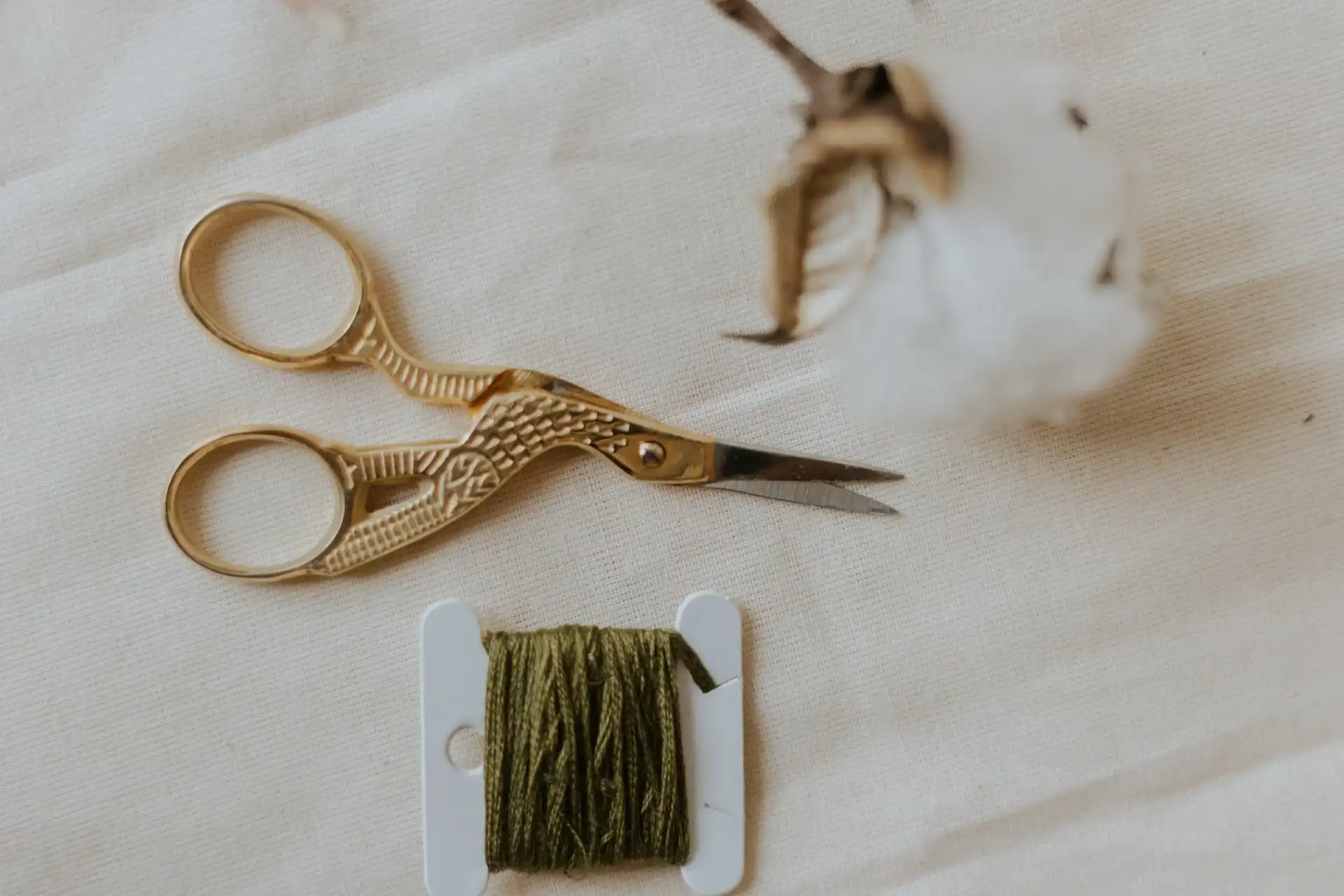
Embroidery scissors come into play when you need finesse for finer details and embellishments in your sewing projects. These small, lightweight tools are precision-crafted to maneuver through tight spaces. They ensure you can accurately snip threads without damaging the surrounding embroidery. With pointed tips, they’re engineered to cut fabric with surgical precision. This is particularly useful for a delicate piece of fabric that demands careful handling.
Embroidery scissors aren’t just practical. Their often ornate handles add an aesthetic charm to your sewing kit. But don’t let their delicate appearance fool you. These scissors serve a critical function in embroidery. They allow for meticulous cuts that preserve the integrity and beauty of your work. Remember, they’re not suitable for heavy materials—reserve their use for the delicate art of embroidery.
Pinking Shears
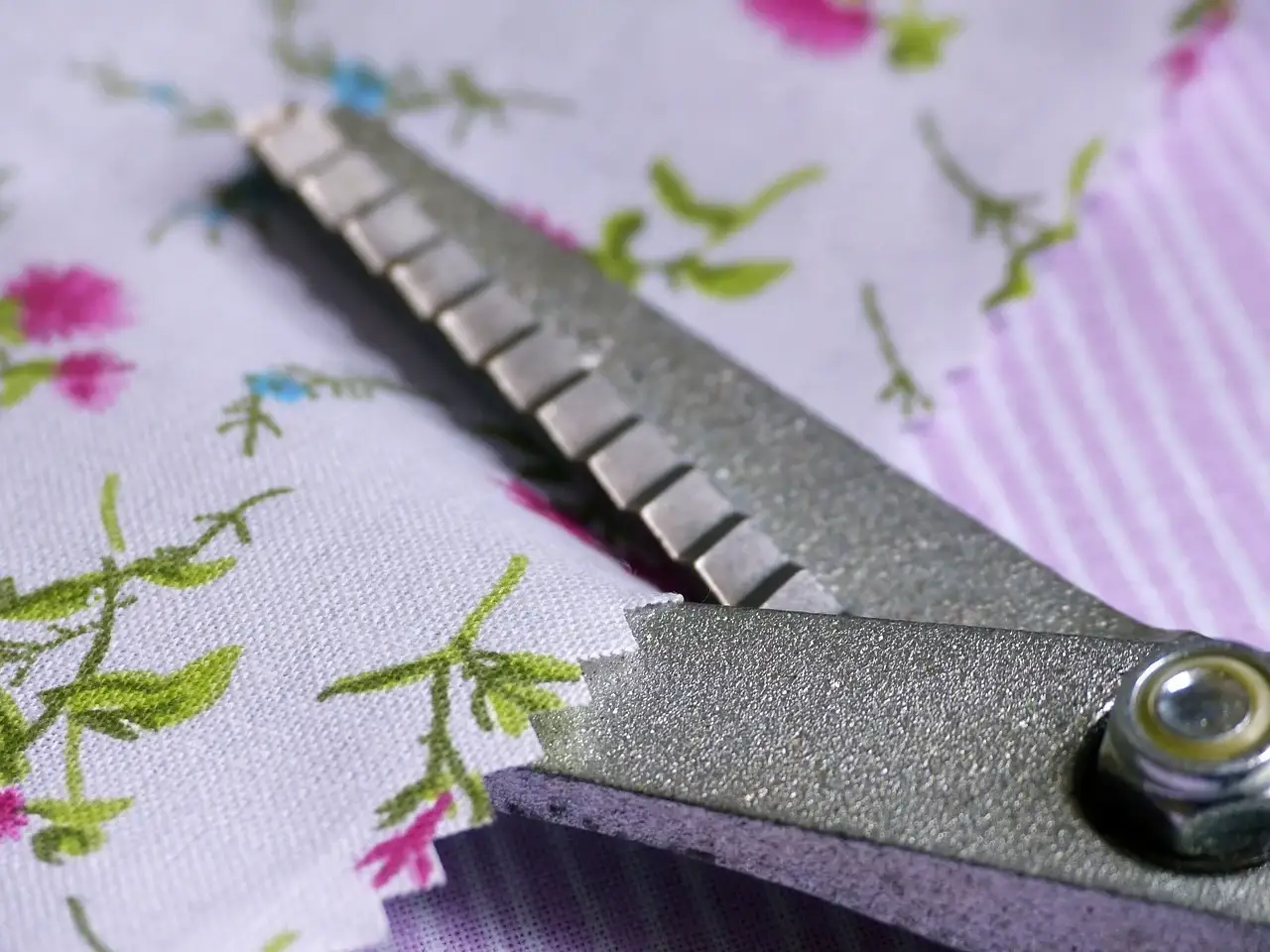
When you’re aiming to prevent fabric edges from fraying with a professional finish, pinking shears are your go-to tool. They feature zigzag blades that create a tidy, decorative edge. These specialized scissors serrate the edge of your material. They allow you to make precise cuts that discourage the fabric’s weave from unraveling.
- Safeguard Your Creations: Protect your fabrics from the heartache of fraying with the meticulous zigzag pattern of pinking shears.
- Enhance with Elegance: Elevate the visual appeal of your projects with the decorative edge that only pinking shears can provide.
- Precision in Every Snip: Relish in the confidence that each cut will be as accurate as the last, ensuring a consistent, professional finish.
Use pinking shears to ensure your craftsmanship remains intact and aesthetically pleasing, stitch after stitch.
Thread Clippers
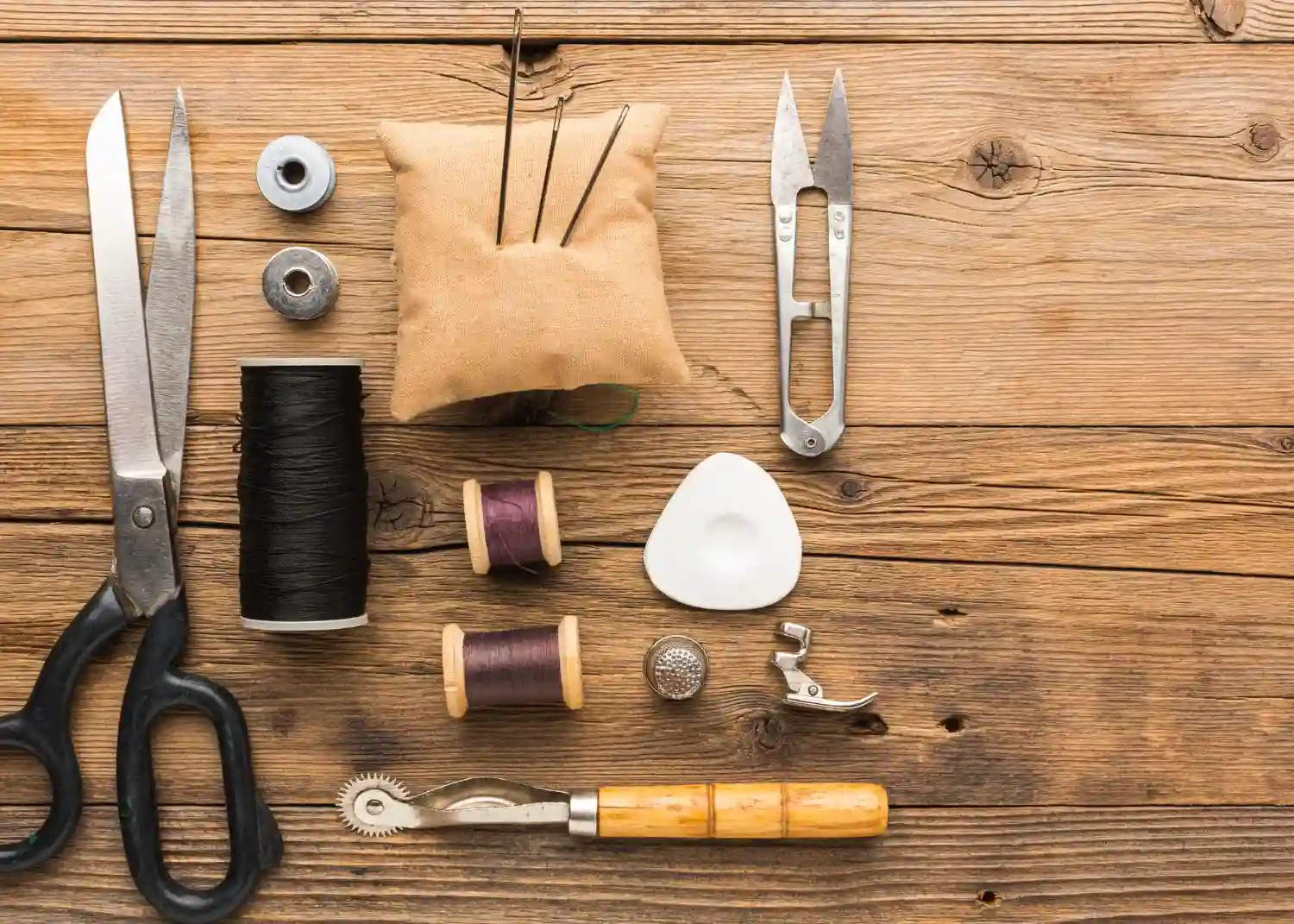
Shifting the focus to thread clippers, these specialized sewing scissors offer unparalleled ease. They can make quick and precise cuts on threads and lightweight fabric. As you delve into your sewing projects, these user-friendly tools become indispensable. Their design usually features one blade that can glide through threads with minimal effort. This ensures a clean cut every time.
| Feature | Benefit |
| One blade | Enables precision and ease in cutting threads |
| Glide mechanism | Allows for smooth operation and quick snips |
| Specialized design | Tailored for snipping threads and small fabric edges |
| User-friendly | Designed for comfort and efficiency during repetitive use |
Thread clippers are a quintessential accessory in your sewing arsenal. They’re perfect for those finishing touches that demand accuracy. Remember, using the right tool not only simplifies your work but also enhances the final quality of your creations.
Rotary Cutter
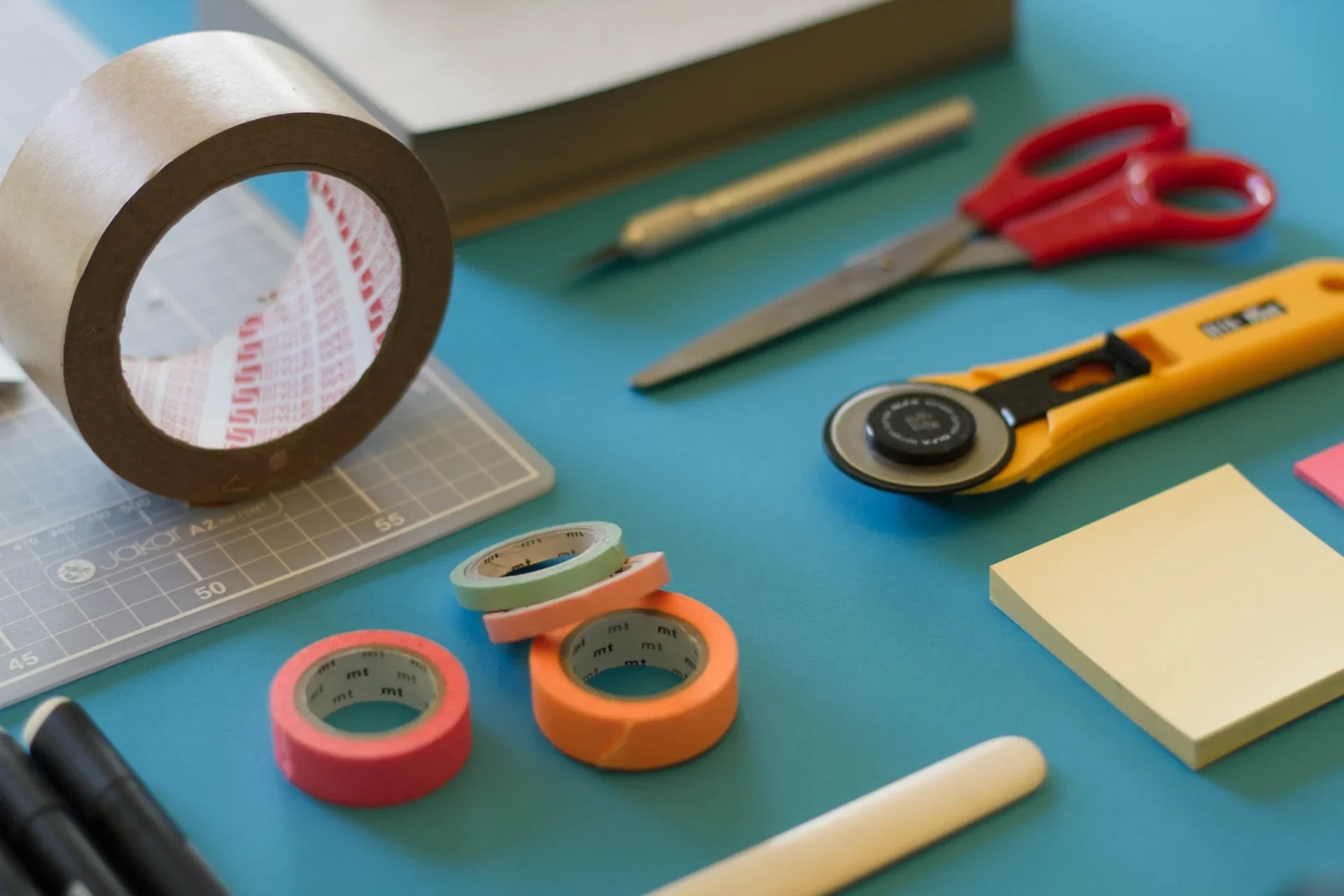
As you explore the realm of sewing scissors, consider the rotary cutter. It’s an essential tool designed to slice through fabric with exceptional speed and accuracy. Unlike traditional fabric scissors, a rotary cutter has a circular blade mounted on a handle. It offers you precision in cutting straight lines and complex curves. It’s a staple for quilters and garment makers. It can supplement the use of fabric scissors and a pair of pinking shears.
- Precision Cutting: Achieve impeccably straight lines and smooth curves without the jagged edges that fabric scissors can sometimes leave.
- Efficiency: Glide through multiple layers of fabric. Save time and reduce hand fatigue.
- Versatility: Switch between different blade sizes. Handle everything from delicate silks to heavy canvas with ease.
Incorporate this tool and experience a transformation in your crafting process.
Can You Use Fabric Scissors for Paper?
It is not recommended to use fabric scissors for cutting paper. Paper can dull the specialized cutting edge of the scissors. The blades of fabric scissors are made from carbon steel. It helps create a sharp edge that glides through textiles with precision. Cutting paper with these scissors can cause the fibers in the paper to blunt the blades. This will make them less effective for fabric cutting.
It is important to use the appropriate scissors for the task at hand. Paper cutting needs scissors with blade angles that are less acute than fabric scissors, as they are better suited to handle the different textures and densities of paper materials. Normal scissors, typically made of stainless steel, are versatile and rust-resistant. They’re ideal for cutting paper.
Can You Use Normal Scissors for Fabric?
While fabric scissors are best reserved for textiles to maintain their sharpness, you might wonder if normal scissors can suffice for occasional fabric-cutting tasks. The truth is that normal scissors lack the specialized design for cutting fabric. The precision of your cuts and the integrity of the fabric could be compromised.
Here are some critical points to consider:
- Precision Loss: Normal scissors mightn’t offer the clean, straight cuts you need. They may potentially ruin your project.
- Material Damage: You risk fraying and damaging your fabric, leading to frustration and wasted materials.
- Tool Deterioration: Using normal scissors on fabric can dull them, making them unsuitable for either task.
Tips for Maintaining Fabric Scissors
To ensure your fabric scissors keep their optimal cutting performance, regularly clean and dry the blades to prevent rust and residue buildup. Proper care is integral to maintaining blade sharpness and ensuring precision with each cut.
After each use, wipe down the blades with a soft, dry cloth. Remove any lingering fibers or adhesives that may have adhered during the cutting process.
Moreover, store your fabric scissors in a protective case or sheath. This prevents accidental contact with other tools from dulling or nicking the blades. It’s also imperative to reserve your fabric scissors only for cutting fabric. Using them to slice through paper or other materials can dull the blades, compromising their cutting performance.
Additionally, apply a few drops of oil to the pivot point periodically. This maintains the smooth operation of the scissor mechanism and prevents wear on the moving parts.
Lastly, have your fabric scissors professionally sharpened, or learn the appropriate sharpening technique. Regular sharpening is crucial to sustaining the edge required for cleanly slicing through textiles.
Adhering to these scissor care guidelines will extend the life of your fabric scissors. You can also maintain their efficacy in your sewing endeavors.
Conclusion
As a dedicated crafter, always reach for your fabric scissors to ensure precise, fray-free cuts on textiles. Reserve normal scissors for other materials to avoid dulling the specialized blades.
Remember, the longevity of your fabric shears hinges on proper care. Keep them clean, oiled, and honed. By respecting the unique purposes of each, you’ll maintain the integrity of your tools and the quality of your creations.
Choose wisely, cut sharply, and your crafts will embody perfection.
Learn more sewing tips on Longan Craft Blog! Dive into the fabric world with Longancraft!





